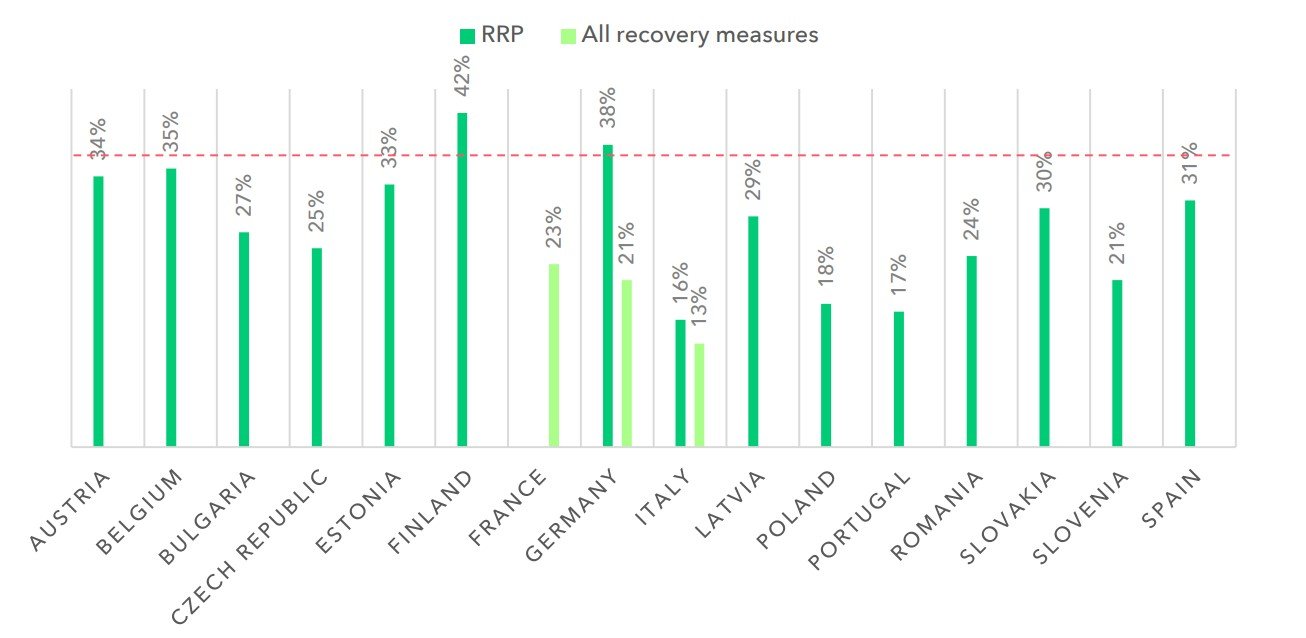Analysis of recovery and resilience plans and measures in 15 EU states shows that national recovery plans are currently falling short of ambitions to “build back better”. The EU’s green recovery is anything but secured. Decisions taken in the coming weeks, especially during the official review of national plans, can help realign the EU towards a green recovery, and are an important credibility test for the European Green Deal and the European Commission.
The EU’s €673bn Recovery and Resilience Facility (RRF) provides a unique opportunity to bring forward much-needed public investments for the implementation of the European Green Deal. EU leaders agreed that recovery spending would need to effectively support the green transition, with 37% of member state plans earmarked for green investments. The Green Recovery Tracker, a joint project between the Wuppertal Institute, E3G, and national experts, has been analysing Recovery and Resilience Plans (RRPs) to see whether they live up to this ambition. Our independent assessment of national recovery plans uses a methodology that seeks to mirror the Climate Tracking Methodology set out in the RRF Regulation, combined with information on individual measures provided by national experts. Our data and results are available on our website www.GreenRecoveryTracker.org.
This background briefing summarizes three key insights from our analytical work on recovery and resilience measures in 15 EU countries to date and outlines recommendations based on those:
- Many national recovery plans are in danger of missing the 37% climate spending target. The Commission’s review of the plans is a crucial moment for realigning the EU with a green recovery, and the Commission should not hesitate to scrutinize member state submissions closely.
- There are significant risks that measures that look green at first glance may end up supporting fossil fuels. Many plans still include measures not aligned with the green transition. The milestones and targets that are negotiated between the Commission and national governments are an important instrument for providing clarity on where exactly recovery funding will be used and ensure that it advances the green transition.
- Most recovery plans are not aligned with the EU’s new 2030 climate target and are not used to accelerate the climate transition in line with the new target. This shows that scrutiny not just of investments but also of reforms included in RRPs, including on the links between RRP development and national energy and climate policy such as NECPs, is crucial.



